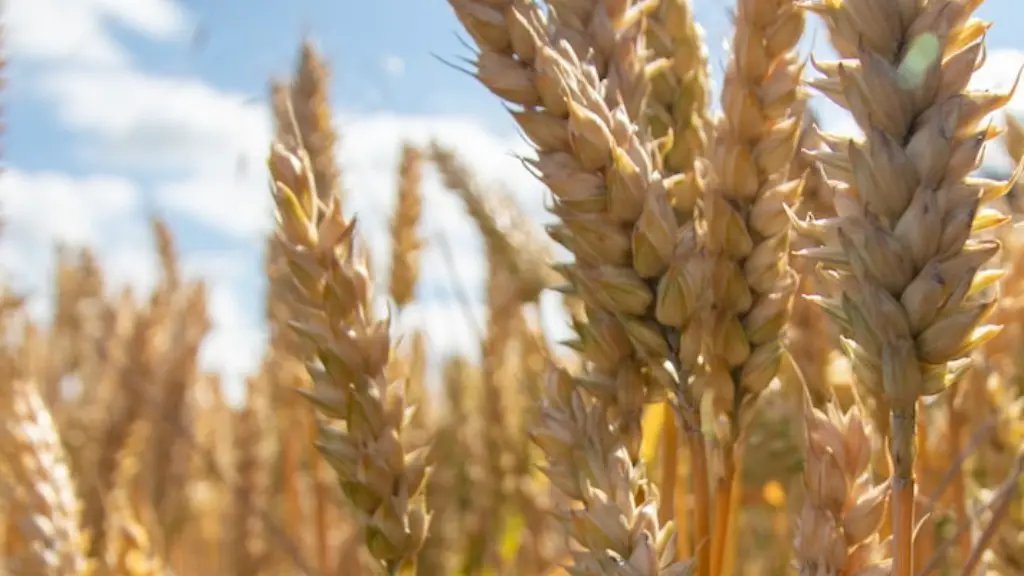GM agriculture is the application of modern biotechnology to crop production. It involves the use of technology to make crops more resistant to pests and diseases, tolerant of environmental stresses, and capable of higher yields.
GM agriculture has helped to increase food production and improve food security in many parts of the world. It has also helped to reduce the use of pesticides and herbicides, and to lower the cost of production for farmers. GM crops have also been shown to have other benefits, such as improved nutritional content and enhanced flavor.
Some of the positive outcomes of GM agriculture include increased crop yields, reduced need for pesticide and herbicide use, and increased resistance to pests and disease. GM agriculture can also lead to more efficient use of water and other resources, and it can help to reduce greenhouse gas emissions.
What is a positive impact of GM crops?
The world’s food supply is under pressure from population growth, climate change, and other factors. To meet this challenge, scientists are working on ways to increase the supply of food while reducing the cost and increasing the shelf life. One approach is to develop faster-growing plants and animals. Another is to develop food with more desirable traits, such as potatoes that produce less of a cancer-causing substance when fried. Still another is to develop medicinal foods that could be used as vaccines or other medicines.
GMO crops have been engineered to be resistant to herbicides and pests, which reduces the amount of pesticides and other chemicals that farmers need to use. This can save farmers money and help to reduce the amount of chemicals that end up on crops. When farmers use herbicide-tolerant crops, they can reduce the need to till the soil to control weeds, which can help to reduce soil erosion and improve water quality.
What are the positives and negatives of GMOs in agriculture
GMO foods are designed to be healthier and cheaper to produce. Advantages of GMO foods include added nutrients, fewer pesticides, and cheaper prices. Disadvantages of GMO foods can be allergic reactions or increased antibiotic resistance.
GMO crops are those that have been genetically modified to resist herbicides or pests. They have been controversial since their inception, with many people concerned about their safety.
There is some evidence that GMO crops can reduce the amount of pesticides used, which is good for the environment. However, there is still not enough long-term human research to know for sure whether GMOs are safe to eat. The main concerns around GMOs involve allergies, cancer, and environmental issues. All of these could potentially affect consumers.
What are some positive examples of GMOs?
GMO crops that were developed specifically to benefit consumers are now commercially available. For example, a GMO soybean that is used to create a healthier oil is commercially grown and available. GMO apples that do not brown when cut are now available for sale and may help reduce food waste.
Drought-tolerant seeds are a type of genetically modified organism (GMO) that have been modified to require less water than traditional crops. These seeds have been engineered to be more resistant to drought conditions, and as a result, can help farmers conserve water, reduce carbon emissions, and improve soil health. In addition, drought-tolerant GMOs can also help farmers increase their crop yield by allowing them to grow crops in areas that were previously unsuitable for agriculture.
What are 3 pros and 3 cons of GMO foods?
GMO crops have the potential to be more nutritious than their non-GMO counterparts. They are also grown with fewer pesticides, which is better for the environment. However, GMO foods may cause allergies because of their altered DNA. They may also increase antibiotic resistance.
The reduction in insect biodiversity when crops are resistant to insects can have a number of negative effects. One is that it can create more weeds or harder-to-kill invasive species. Another is that it can transmission of GMO genes to wild plants and animals.
What are GMOs 5 cons
The use of GMOs brings with it a number of risks, chief among them being the potential for alteration of the greenhouse gas emissions, the possibility of toxicity to humans or animals, and the potential for changes in the interaction between plants and their environment. While the use of GMOs may offer some advantages, it is clear that the risks associated with their use should not be ignored.
GM crops disrupt the natural process of gene flow by favouring one organism over another. This can endanger farmers and trade, as well as the environment. GM crops are more inclined towards marketization of farming, which can work on immoral profits.
Are GMOs good for the environment?
GM crops have the potential to help reduce agricultural greenhouse gas (GHG) emissions in a number of ways. First, GM crops can increase yields, which can lead to less land being used for agriculture and therefore fewer emissions from land-use change. In addition, GM crops can be bred to be more resistant to pests and diseases, which can reduce the need for pesticides and other chemicals that can generate emissions. Finally, GM crops can be designed to be more efficient in their use of water and other resources, which can further reduce emissions.
GM crops are no more likely to damage the environment than any other kind of crop. In fact, some GM crops are actually designed to be more environmentally friendly, such as those that are resistant to herbicides or pests. The real issue is not the crops themselves, but the way they are grown. If farming practices are not sustainable or cause excessive harm to wild plants, then that is a problem regardless of whether the crops are GM or not.
What are 10 cons about GMOs
There are several cons to genetically modified organisms (GMOs). They might contribute to a rise in allergic reactions, as people may be allergic to the proteins that have been introduced into the food. GMO foods can also prompt allergic reactions from people who are sensitive to different foods. Additionally, GMOs may contribute to antibiotic resistance, as the introduction of new genes into bacteria can make them resistant to antibiotics. Some research has also linked GMOs to cancer, although this research is inconclusive. Finally, very few companies are in charge of the GMO seed market, which can lead to monopolies and higher prices for farmers.
1) Potential impact on non-target species: There is a potential for genetically modified crops to have an impact on non-target species, such as insects and other animals. 2) Potential for increased weediness: There is a potential for genetically modified crops to become more weed-like, and thus more difficult to control. 3) Increase in toxin levels in the soil: There is a potential for the toxin levels in the soil to increase if genetically modified crops are grown in an area. 4) Exchange of genetic material between the transgenic crop and related plant species: There is a potential for the transgenic crop to exchange genetic material with related plant species, which could create new, more resistant, strains of weeds or other plants. 5) Selection for: There is a potential for genetically modified crops to be selected for by pests or other animals, which could create new, more resistant, strains of pests or other animals.
Why is genetically modified food good?
Most existing genetically modified crops have been developed to improve yield through the introduction of resistance to plant diseases or of increased tolerance of herbicides GM foods can also allow for reductions in food prices through improved yields and reliability. Additionally, GM crops can have a positive environmental impact by reducing the need for chemical pesticides and by increasing the efficiency of land use.
There is currently no evidence that consuming GM foods is unsafe for humans. However, there is always the potential for unforeseen health effects when tinkering with the genes of plants. Additionally, GM crops could lead to changes in our food supply that introduce toxins or cause allergic reactions.
Final Words
There are many positive outcomes of GM Agriculture, such as increased yields, Reduced pesticide use, Drought tolerance, Reduced disease and virus susceptibility, and More nutritious food.
Some positive outcomes of genetically modified (GM) agriculture include increased crop yields, reduced need for chemical pesticides, and enhanced nutrition. Additionally, GM agriculture can help crops to become more resistant to drought, cold, and other adverse environmental conditions. Ultimately, GM agriculture has the potential to improve food security by increasing the availability of nutritious food.





